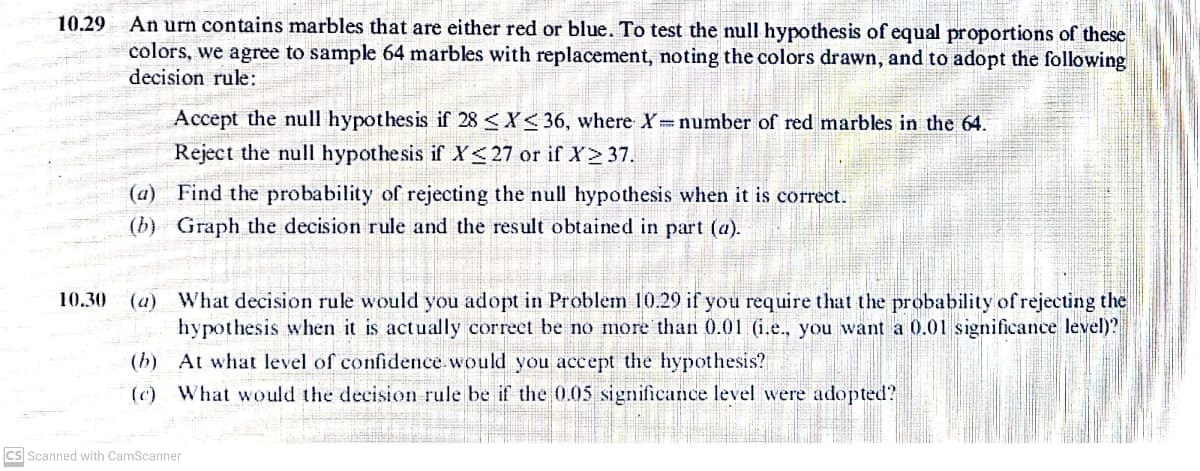What decision rule would you adopt in Problem 10.29 if you require that the probability of rejecting the hypothesis when it is actually correct be no more than 0.01 (i.e., you want a 0.01 significance level)? (b) At what level of confidence would you accept the hypothesis? (c) What would the decision rule be if the 0.05 significance level were adopted
What decision rule would you adopt in Problem 10.29 if you require that the probability of rejecting the hypothesis when it is actually correct be no more than 0.01 (i.e., you want a 0.01 significance level)? (b) At what level of confidence would you accept the hypothesis? (c) What would the decision rule be if the 0.05 significance level were adopted
College Algebra
7th Edition
ISBN:9781305115545
Author:James Stewart, Lothar Redlin, Saleem Watson
Publisher:James Stewart, Lothar Redlin, Saleem Watson
Chapter9: Counting And Probability
Section9.3: Binomial Probability
Problem 2E: If a binomial experiment has probability p success, then the probability of failure is...
Related questions
Question
(a) What decision rule would you adopt in Problem 10.29 if you require that the probability of rejecting the
hypothesis when it is actually correct be no more than 0.01 (i.e., you want a 0.01 significance level)?
(b) At what level of confidence would you accept the hypothesis?
(c) What would the decision rule be if the 0.05 significance level were adopted?
P/S: Solve for question 10.30 only but based on question 10.29 given at the image

Transcribed Image Text:An urn contains marbles that are either red or blue. To test the null hypothesis of equal proportions of these
colors, we agree to sample 64 marbles with replacement, noting the colors drawn, and to adopt the folowing
decision rule:
10.29
Accept the null hypothesis if 28 <X< 36, where X number of red marbles in the 64.
Reject the null hypothesis if X< 27 or if X> 37.
(a) Find the probability of rejecting the null hypothesis when it is correct.
(b) Graph the decision rule and the result obtained in part (a).
(a) What decision rule would you adopt in Problem 10.29 if you require that the probability of rejecting the
hypothesis when it is actually correct be no more than 0.01 (i.e., you want a 0.01 significance level)?
(h) At what level of confidence would you accept the hypothesis?
(c) What would the decision rule be if the 0.05 significance level were adopted?
10.30
cs Scanned with CamScanner
Expert Solution
This question has been solved!
Explore an expertly crafted, step-by-step solution for a thorough understanding of key concepts.
This is a popular solution!
Trending now
This is a popular solution!
Step by step
Solved in 4 steps

Recommended textbooks for you

College Algebra
Algebra
ISBN:
9781305115545
Author:
James Stewart, Lothar Redlin, Saleem Watson
Publisher:
Cengage Learning

College Algebra (MindTap Course List)
Algebra
ISBN:
9781305652231
Author:
R. David Gustafson, Jeff Hughes
Publisher:
Cengage Learning


College Algebra
Algebra
ISBN:
9781305115545
Author:
James Stewart, Lothar Redlin, Saleem Watson
Publisher:
Cengage Learning

College Algebra (MindTap Course List)
Algebra
ISBN:
9781305652231
Author:
R. David Gustafson, Jeff Hughes
Publisher:
Cengage Learning
